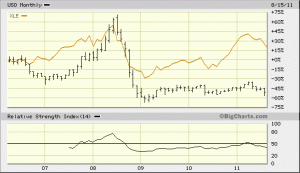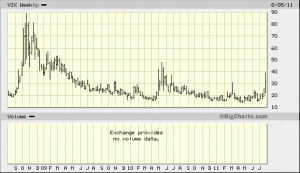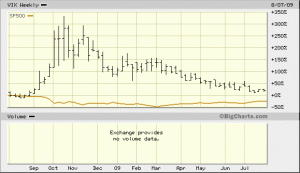How To Invest In Oil
Since the advent of the Oil ETF it seems that oil has taken on a larger role than simply an energy based commodity. Over the past 5+ years that these ETFs have been trading we have seen Oil prices go from the $40s to over $140 down to $30 back up to $115 and now back down to around $80. That is a tremendous amount of volatility and cannot be attributed to simple changes in supply or demand. Oil has become the ultimate inflation hedge for many investors, until the past year it was actually preferred to even Gold or Silver which are traditional inflation hedges.
Why Invest In Oil?
The Top 2 reasons are to Make Money and also to to protect yourself from rising prices (Hedge). The downside of a large flow of investment capital into oil is that there are far reaching consequences when oil gets driven beyond it’s reasonable price. It makes the cost of transportation more expensive driving up the cost of almost all goods, especially food. In order to protect yourself from rising prices you may want to invest in oil or even a Gas ETF – UGA. UGA rises and falls with the price of gasoline which is the one that affects us the most on a daily basis.
What Is The Best Way To Invest In Oil?
For the average investor who wants to hold their investments for a prolonged period of time I have found it best to go with an Oil Stock ETF instead of the futures based Oil ETFs. Over longer periods of time these ETFs almost always outperform the oil futures ETFs like USO or OIL. Here is a chart showing the performance of USO (black bars) compared to XLE (brown line) since April 2006 when USO started trading. It’s easy to see that you would’ve done much better in the oil stocks than in the USO oil futures based etf.
For short term traders there are Leveraged ETF versions that also concentrate on the oil stocks. The first one is a Double Oil ETF (2x Leverage) that basically will go up or down twice as much as XLE on a given day. You don’t want to get in these unless you know what you are doing, they are designed for short term trading and not for holding long periods. This one is offered by ProShares and has been trading since January 2007 under the ticker symbol DIG. There is also a double short version that has the ticker symbol DUG.
Direxion offers a 3X Leveraged Oil ETF (Symbol ERX) for those of you who really want some leverage. This one is based on the Russell 1000 Energy Index and it really is volatile. Again, these ETFs are only for short term investing or trading and are designed for experienced investors. They also offer a 3X Short ETF that trades under the ticker symbol ERY.
If this is your first foray into Oil Investing I would definitely recommend starting with either XLE or XOP. Once you gain some knowledge you may decide you want to venture out into the other more volatile areas of the market. Another area that’s worth looking at is the Bakken Oil Stocks which are a collection of companies that are producing oil in the Bakken Oil Field located in Western ND and Eastern Montana. There is also a Bakken oriented mutual fund that specialized in this area (symbol ICPAX). This area is one of the fastest growing production areas in the world right now, so it’s worth a look!




